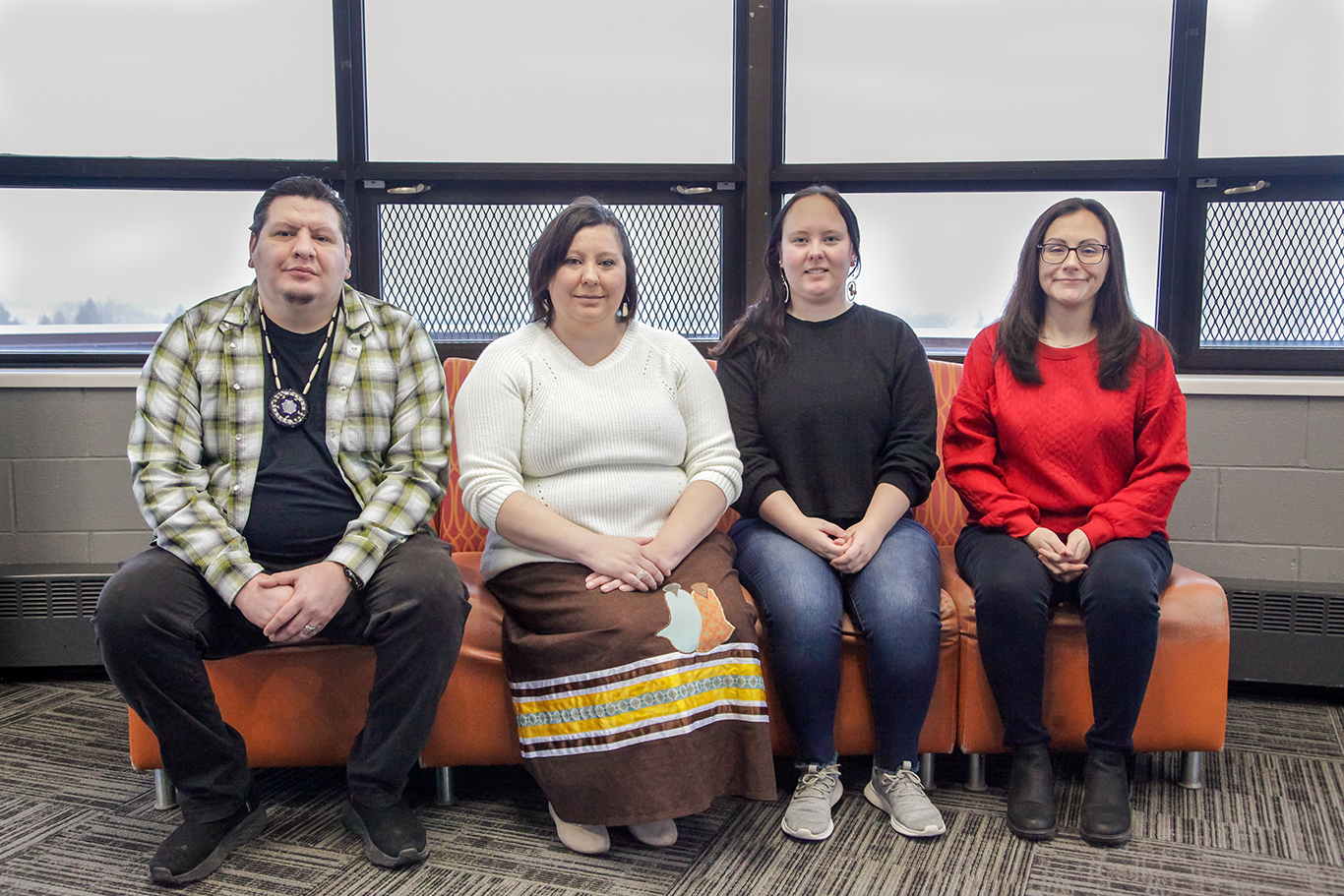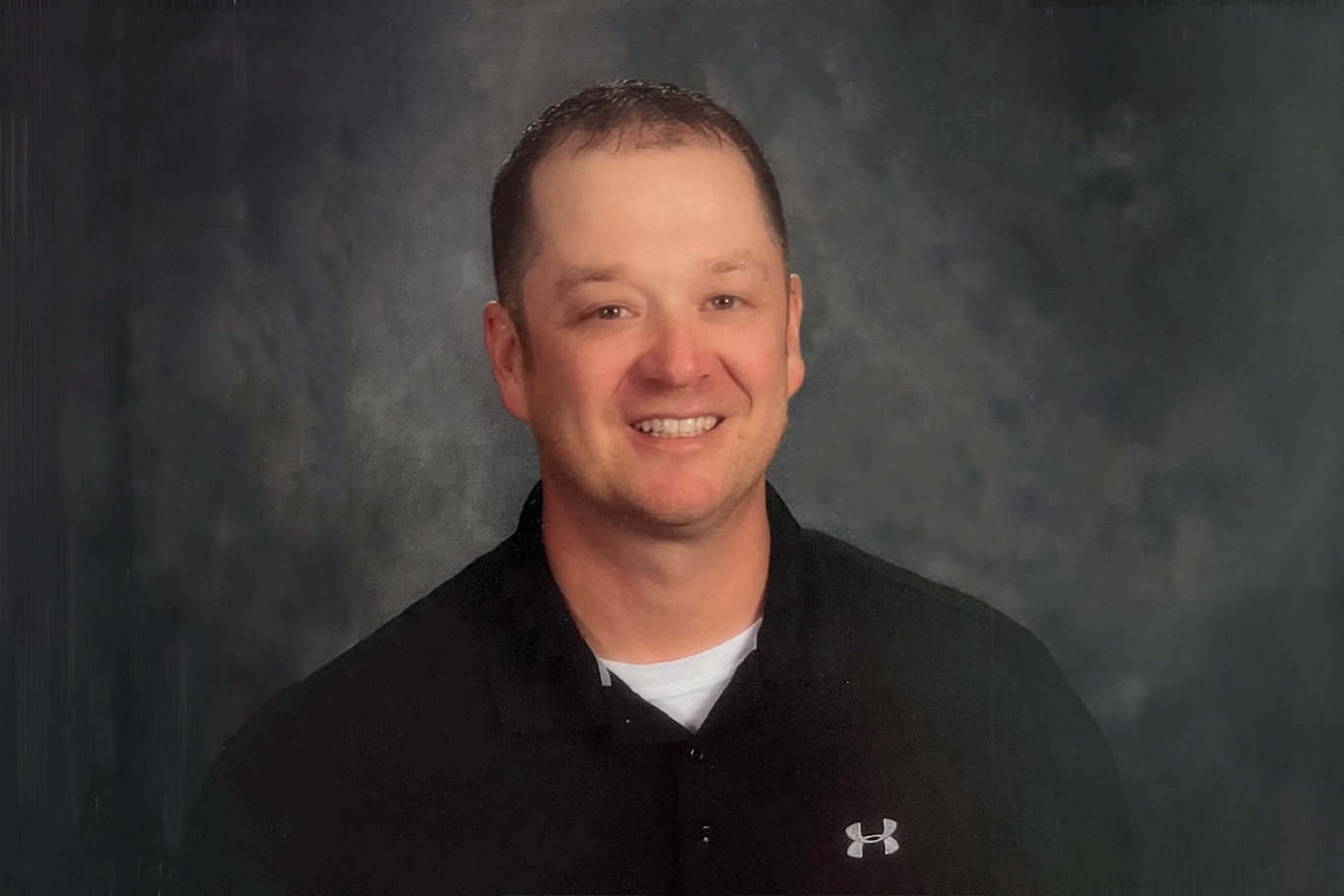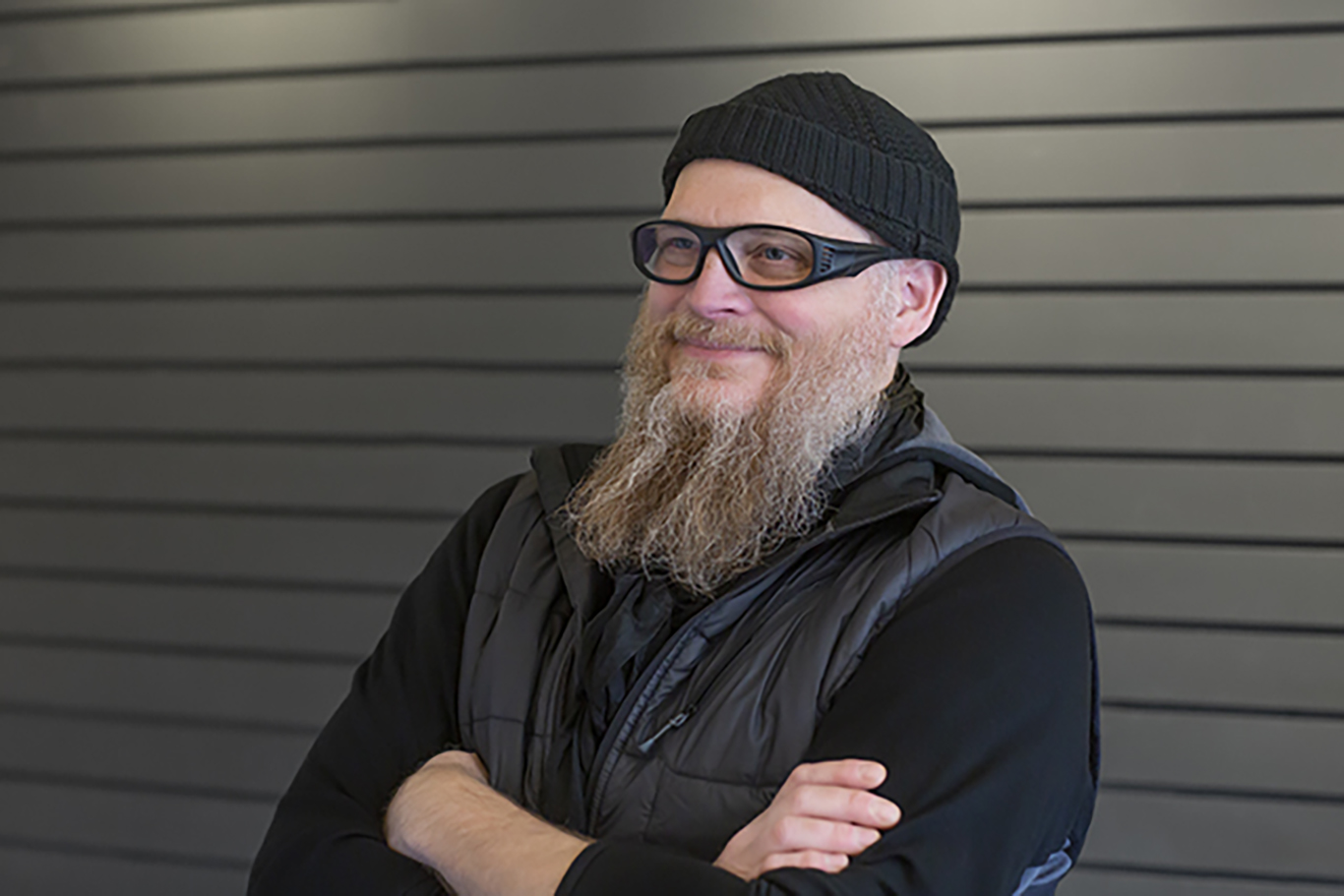Speaking Without Words
It’s not always easy to express yourself with words. Whether it’s frustration, anger, grief, or anxiety, these alumnae use art to draw out emotions some can’t describe, and help them paint a picture of what they’re feeling.
Expressing Emotions
Looking around the room, it feels kind of like home.
A comfortable couch with plush pillows, a small desk, and art supplies fill the room.
It’s the space Sara Julsrud ’09 (art education), uses to help children process their emotions through art therapy.
Julsrud works at Tulalip Tribes Behavioral Health in Tulalip, Wash., as a child and family therapist. She is a nationally registered art therapist who helps children use the creative process, art materials, and the resulting artwork as a therapeutic and healing process.
“I work with a lot of children who suffer from trauma. This can manifest in many ways and is often a visual and/or sensory experience,” Julsrud said. “Words can be a difficult starting point for many people trying to make sense of difficult events, since our brains aren’t wired to talk when we experience extreme distress.”
Julsrud didn’t discover art until late in her high school career, where she was paired with a girl with Down syndrome in her art class. The two connected instantly.
“We had so much fun. We would draw and laugh and talk,” Julsrud said. “Some of the schoolteachers let me know they didn’t know she had such a great vocabulary, or hadn’t seen her interact so warmly with another person. It was really eye-opening to me seeing what art can do for other people and how it can bring people together and really let somebody shine.”
So Julsrud enrolled at MSUM intending to become an art teacher, but soon realized she wanted to do more.
“I think MSUM gave me a lot of the tools I needed to explore my areas of interest, while at the same time guiding me on a journey I didn’t know I was on. I didn’t know I’d end up an art therapist. So in that sense it was the perfect balance of challenge and support,” she said. “There were lots of opportunities to explore interests; there was always someone knowledgeable to answer questions or support that interest.”
Her clients in Tulalip range in age from 3 to 17, and she works with individuals, groups, and families. She says art can help children and teens express themselves in ways they would be unable to otherwise.
“They can say so much in an image that a lot of times they can’t say in words or can’t communicate quite right. It’s a lot easier for youth to externalize a conflict, then talk about it when it is a physical object that is separate from themselves,” Julsrud said.
And while some aspects of the job can be challenging, Julsrud says watching her clients “gain more confidence, learn to love and accept who they are, and to identify their strengths” is the most rewarding part about what she does.
“I can’t imagine doing anything different. I am honored to be sharing art with people and helping them to find a way to work through tough things.”
Expanding Identities
As she wheels her cumbersome cart through the hallways of Sanford’s Roger Maris Cancer Center, Marissa Van Vleet ’15 (art education), hopes to find patients willing to spend some time working with her.
Van Vleet is the artist in residence at Roger Maris Cancer Center in Fargo N.D., helping patients pass the time while receiving treatment. Her presence in the facility gives patients an opportunity to forget for a short while why they are there.
“I love when people come excited to come to chemo,” Van Vleet said. “That’s weird. No one is excited to come to chemo, because it sucks. But I have a patient that was like, ‘Oh, I was so excited to come today because I have all this yarn,’ and she was going to teach me how to crochet hats. And I was like, ‘You just said you were excited to come to chemo. That’s strange, but yeah, let’s crochet hats!’ It totally changes the way people see their time spent here.”
From dream catchers and garden markers, to bookbinding and painting, Van Vleet offers what she calls a “menu of art options” to patients of all ages.
“A lot of the stuff I do is trying to teach you a new skill, because I think it’s important for you to think about parts of your identity that aren’t wrapped around this illness,” she said. “I’ll usually pop into rooms, bring my art cart with me, make a mess in the room and make the nurses kind of move around us in awkward ways, clean it all up, put it on the cart, and move on.”
Unlike an art therapist, Van Vleet’s job as an artist in residence is to share her expertise and teach patients new techniques and skills, meeting them right where they are. In the process, Van Vleet has learned to see the world through a multifaceted lens.
“Everyone has their unique gifts and their unique talents, so instead of seeing people labeled specifically as homeless or cancer patient or refugee, you get to learn, ‘This person’s name is…’ and this is what they’re great at. They happen to be a cancer patient, but they also happen to be a phenomenal artist, or a great musician, or a very eloquent speaker. It gives you a glimpse into people that has more dimensions than an outward label.”
And by learning about those she works with, Van Vleet is able to create meaningful lessons patients can keep and remember.
“A lot of people have great stories here,” Van Vleet said. “I like to learn about the things they like so I can integrate that into some sort of lesson; something for them to have or to give to someone else as a reminder of what they’re facing now.”
While she teaches new skills, Van Vleet discovers a great deal in return. A group of women diagnosed with Stage IV cancer has particularly influenced her outlook on life.
“I feel like I’m learning this wisdom that I shouldn’t be allowed yet,” Van Vleet said. “These women have insight they’ve gained from having a rough diagnosis that I get to be included on because I’m working with them, and that’s pretty incredible. You learn a lot about what’s important in life when you work here.”
Guiding Discovery
Nestled in the Magnolia neighborhood of Seattle near the end of Thorndyke Avenue West is Circle of Art Studios.
The studio, which was founded in 2013, is home to several varieties of art. Kayla (Stromberg) Helenske ’06 (art education) offers art classes and art therapy here, and her husband Adam Helenske ’08 (art) houses his business – Helenske Clayworks – in the same space.
After her graduation from MSUM, Helenske taught elementary art in Fargo Public Schools. While she enjoyed her time there, she felt compelled to help her students in another way.
“(Students) would be asking to come in at lunchtime or asking to come in after school just to hang out with me and be able to make more art. It became this space where they felt comfortable. Whenever I would notice something I wanted to help them further, but I wasn’t fully qualified at that time. I would refer them to the counselor but they didn’t have that same connection they had felt with me. I wanted to be there and to help them, rather than pass them on,” she said.
This inspired Helenske to attend graduate school for psychology with mental health counseling and art therapy, and eventually co-found Circle of Art Studios.
Helenske says art therapy can be beneficial for all ages with a multitude of presenting issues, including: dementia, anxiety, depression, trauma, loss and grief, self-esteem, emotional regulation, behavioral issues, social skills, and more.
“Art therapy is about allowing for personal expression. It allows people to communicate their thoughts and feelings using lines, shapes, colors, and textures,” Helenske said. “It’s about using the art to communicate. We can tell our stories over and over and over again, but sometimes when we step back a little bit and try something else it allows for new information to emerge.”
Helenske is client-centered, offering support and guidance for her clients to reveal their strengths. She takes a holistic approach in her practice, referring clients for collaborative care with naturopaths, chiropractors, acupuncturists, and massage therapists to further treat symptoms without medication.
“Often you’ll talk to a friend and a friend always has an answer, like ‘Try this, this will help.’ That’s awesome. But therapy works in a different way, where I as a therapist want to help my clients find that voice for themselves, something that feels true to them.”
Helenske shares this approach with others during a three-day workshop at MSUM each summer. The Intro to Art Therapy course helps students understand art therapy and find a program that may work well for them.
Because in the end, it’s all about self-expression.
“I want to help inspire somebody, to help them find what makes them live the life they desire,” Helenske said.
This story was first published in Moorhead Magazine, Fall 2016.
Make Sure Your Story Is Heard
Let us know how your life has been changed by being a Dragon: tell us your MSU Moorhead story today!
Send Us Your Story


